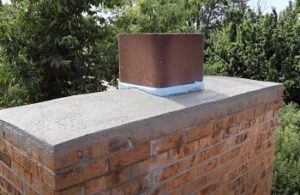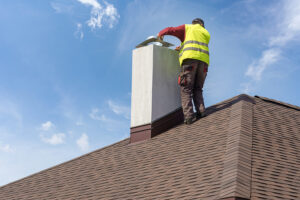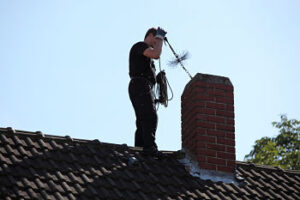Common Chimney Issues That Cause Problems

Maintaining a functional chimney is essential not only for the efficient operation of your fireplace but also for the safety of your home and loved ones. Unfortunately, many homeowners underestimate the importance of regular chimney inspections and maintenance, which can lead to a range of issues causing safety hazards, inefficiency, and costly repairs.
In this article, we'll explore the most common chimney problems that can wreak havoc if left unaddressed and provide recommendations for resolving each issue.
8 Common Chimney Problems We Find
1. Creosote Buildup:
Creosote, a black or brown substance, accumulates in chimneys as a byproduct of burning wood. Over time, it thickens and hardens, becoming a serious fire hazard. A thick layer of creosote can lead to chimney fires that can quickly spread to your home. To address this issue, it's crucial to schedule regular chimney cleanings by professionals who can remove the creosote buildup. The Chimney Safety Institute of America (CSIA) recommends at least an annual cleaning to ensure safe operation.
2. Cracked or Damaged Chimney Crown:
The chimney crown, positioned at the top of the chimney, acts as a protective barrier against weather elements. Cracks or damage to the crown can allow water to seep into the masonry, leading to deterioration and costly repairs. To prevent this, it's essential to repair cracks using appropriate materials and techniques. Additionally, consider applying a waterproof sealant to enhance the crown's durability and water resistance.
3. Crumbling Mortar and Bricks:
The mortar holding the bricks together in your chimney can deteriorate over time due to exposure to the elements. This can lead to weakened structural integrity and water penetration, causing more severe damage. Tuckpointing, a process that involves replacing damaged mortar with new mortar, can effectively address this issue and restore the chimney's strength and stability.



4. Damaged Chimney Liner:
The chimney liner plays a crucial role in channeling gases and preventing heat transfer to combustible materials. Damage to the liner can occur due to chimney fires, acidic byproducts, and general wear and tear. A damaged liner not only reduces efficiency but also poses the risk of carbon monoxide leakage. Depending on the extent of damage, consider relining the chimney or repairing the liner to ensure proper function and safety.
5. Chimney Leaks:
Chimney leaks can originate from various sources, including flashing, chimney cap, and crown issues. Water infiltration can cause extensive damage to both the interior and exterior of your chimney, as well as your home's structure. To prevent leaks, it's essential to regularly inspect and maintain chimney components prone to leakage. Address any issues promptly and consider applying a high-quality water repellent to protect your chimney from further damage.
6. Obstructed Chimney Flue:
Debris, nests, or animals can obstruct the chimney flue, preventing proper ventilation and causing potential carbon monoxide buildup inside your home. Regular chimney inspections are crucial to identifying and removing obstructions promptly. A professional chimney sweep can ensure that your chimney flue remains clear and safe for use.
7. Poorly Functioning Damper:
The damper controls airflow in your chimney, allowing you to regulate the fire and prevent heat loss when the fireplace is not in use. A rusted, misaligned, or malfunctioning damper can impact energy efficiency and indoor comfort. To address this issue, consider repairing or replacing the damper. A functional damper not only improves energy efficiency but also enhances your fireplace experience.
8. Exterior Masonry Deterioration:
Exposure to weather elements can cause masonry damage on the exterior of your chimney. This not only affects the aesthetics but also allows water to penetrate and exacerbate the deterioration. Regular inspections and maintenance of the exterior masonry are essential. Applying a waterproof sealant can provide an extra layer of protection, preventing water damage and preserving the chimney's structural integrity.
Conclusion:
Taking care of your chimney goes beyond the simple act of lighting a fire. By understanding and addressing these common chimney issues, you can ensure the safety, efficiency, and longevity of your chimney and fireplace system. Regular professional inspections and timely repairs are key to preventing these problems from escalating into costly and potentially dangerous situations. Prioritize chimney maintenance to enjoy a warm and secure home for years to come.